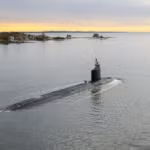By B.C. Kessner After years of development by a tri-national industry team of air defense giants, the Medium Extended Air Defense System (MEADS) is on the verge of pre-integration tests, according to a program executive. "We will start bringing hardware together in integration events at the end of this year," Steve Barnoske, president of MEADS International, told Defense Daily recently. "At end of this year and the beginning of next, we'll be at an Italian air base called Practica de…
Contract Updates
Southeastern Kentucky Rehabilitation Industries (Corbin, Kentucky) – $14,312,903
Southeastern Kentucky Rehabilitation Industries,** Corbin, Kentucky, has been awarded a maximum $14,312,903 modification (P00008) to a five-year contract (SPE1C1-24-D-N017) with no option periods adding various boonie covers via conversion. This is a firm-fixed-price, indefinite-quantity contract. The ordering period end date…
Teradyne Inc. (North Reading, Massachusetts) – $16,723,189
Teradyne Inc., North Reading, Massachusetts, has been awarded a maximum $16,723,189 firm-fixed-price contract for circuit card assemblies. This was a sole-source acquisition using justification 10 U.S. Code 3204 (a)(1), as stated in Federal Acquisition Regulation 6.302-1. This is a one-year…
Ham Produce and Seafood Inc. (Honolulu, Hawaii) – $26,250,000
Ham Produce and Seafood Inc.,* Honolulu, Hawaii, has been awarded a maximum $26,250,000 fixed-price with economic-price-adjustment, indefinite-delivery contract for fresh fruits and vegetables. This was a competitive acquisition with three responses received. This is a five-year contract with no option…
Longbow LLC (Orlando, Florida) – $11,203,243
Longbow LLC, Orlando, Florida, was awarded an $11,203,243 modification (P00017) to contract W58RGZ-22-C-0053 for sustainment of the Apache AH-64D/E Model Fire Control Radar, including depot-level and supply support elements and program management functions. The modification brings the total cumulative face…













